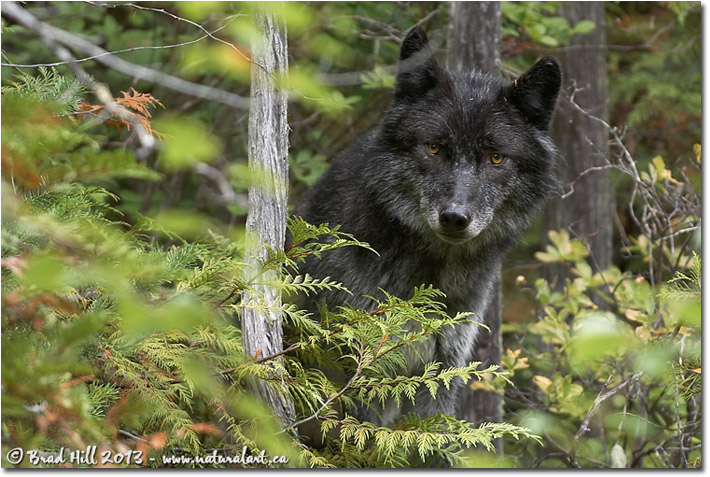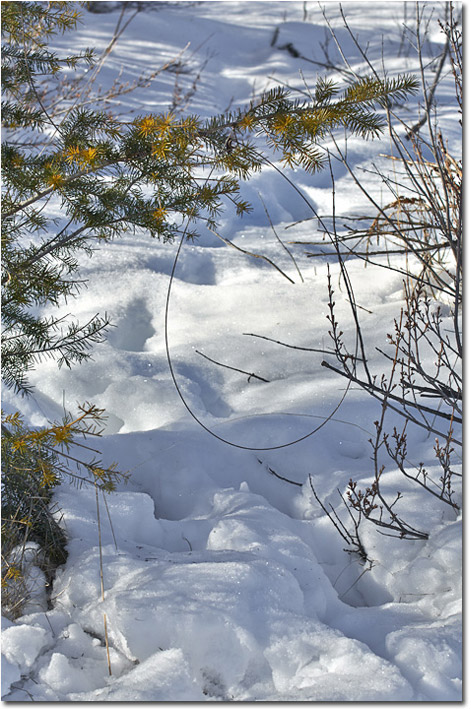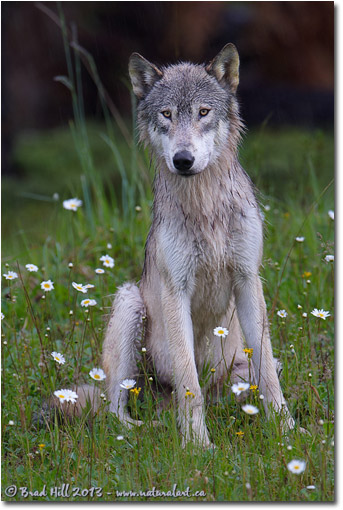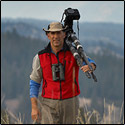|
|
This is an unapologetic undertaking designed to illicit action from anyone who cares about the fate of apex carnivores, and particularly wolves, in British Columbia, Canada. It is also a story which some may find inspiring...

I’m a full-time wildlife and conservation photographer. I’m also a biologist who has always had a passion for any animal in the taxonomic order we call Carnivora. I follow both the popular literature and newly-published scientific studies on carnivores. One of the world’s leading wolf biologists is counted among my friends.
I live in Canada’s most western province - British Columbia (or BC). This province markets itself world-wide as "Super Natural British Columbia." Not unlike many provinces or western US states, BC attempts to manage its carnivore populations by walking the fine line between minimizing their numbers but without actually driving them so low that they are considered endangered. The management policy of BC targeting the Grey Wolf (Canis lupus) is particularly aggressive - functionally they are considered pests or "vermin" by the BC Government. It’s probably important to back this statement up with a few examples:
- Cost of a species-specific hunting tag for wolves in BC? What wolf tag? No tag required. So no cost. What other "game" species can you hunt in BC without a tag? None.
- Personal "Bag" limit on wolves? Mixed - but in recent years many management units have gone from 2 or 3 to NBL (No Bag Limit).
- But surely there must be a short hunting season - right? Wrong. The season varies a little with management unit but most are from August or September through to June. In my region, no closed season whatsoever below 1100 meters elevation (which means “almost anywhere”).
In practical terms these regulations (or lack thereof) promote opportunistic killing of wolves by hunters whenever they’re seen. In the extreme scenario, a group of hunters encountering a pack of wolves can - with the explicit approval of the government - begin shooting and not stop until all that is left is a pile of smoking corpses. Twelve months a year.
I’ve known about BC’s war on wolves for years, and I’ve been active - both individually and in conjunction with some of BC’s most respected conservation organizations - in lobbying the government to move towards a science-based wolf management plan. But earlier this month the battle got a lot more personal for me...
On the afternoon of February 10, 2013 I was hiking on crown land (Canada’s name for publicly-owned land) not too far from my cabin. I had heard a rumor that government employees known as Conservation Officers (or CO’s) had set some bait in the area to attract wolves. Additionally, the rumor went, they were using trail cams to monitor the situation. So when I stumbled upon a pile of road-killed deer and elk in the woods near my home I wasn’t particularly surprised. But my next discovery shocked me beyond words - the bait pile was ringed by an array of killing neck snares - thin wire nooses positioned on trails in thick willow and birch. Invisible killers. Thankfully, I had chosen to leave my two dogs at home that day.
 Neck Snare Hung for the Kill |
My knee-jerk reaction was to rip all the snares down. But the thought that these may be legally set snares put in place by CO’s gave me pause. That and the fact that the CO’s know me and my views on wolf control - and that I am one of the only people that regularly uses this area. In other words, I would be the prime suspect in what may be deemed a criminal activity (regardless of its morality).
The next day - February 11 - I called the local CO’s to find out more about the snares. Sure enough - they were set by them at the behest of a local rancher who claimed that a pack of wolves had taken up to 14 cattle in the general area in a 6-month period between spring and autumn of 2012. Knowing the particular rancher well - and his penchant for turning out his 500 or so cattle on crown land in May and returning to get them in October - I was skeptical of the accuracy of the identity of the claimed sources of mortality on his cattle. Not only had we had 8 grizzlies working the area all spring and summer, but a number of cougars reside in the area as well. And...the rancher himself has told me that each year he loses a number of cattle to hunters while they "...sight-in their guns."
But I simply could not sit back and do nothing - that’s not in my DNA. One option was to go down the "commando" pathway - just go out and cut and remove the snares - over and over again. I have to admit there was a strange allure to this - it certainly appealed to the rebel in me. But my logical side told me that no matter how many times I cut the snares down the CO’s would just replace them. And, I could end up in a lot of hot water without accomplishing anything significant.
So, I decided to take an alternate approach. Educate myself. Join forces with others trying to end BC’s war on wolves. And go very, very public with the fight.
What transpired between the 11th and 27th of February is too involved and detailed to go into here - those interested may simply visit my blog and read the entries beginning 11 February that are entitled Wolf Snares In My Backyard. But some of the discoveries of my research during this period definitely merit mention - both on the immediate issue (the use of the snares themselves) and on the bigger picture of how we manage wolves in BC (and much of the rest of North America).
On the Use of the Snares
My visceral reaction to the snares was that choking to death in a snare would be a horrible, painful death. And, it turns out that the professionals in the field of animal cruelty agree. The U.S. National Humane Education Society states that snares are "...primitive, unnecessarily brutal, and, unfortunately, inexpensive." They further state that:
"Snares can catch animals by the neck, midsection, or a limb. As the animal tries to become free from the trap, the wire grows tighter around the animal’s body. This can result in broken legs, crushed organs, and suffocation. Animals caught in these traps die slow, painful deaths."
Shortly after discussing the issue of the cruelty of the snares on my blog I starting receiving testimonials from veterinarians (on letterhead) condemning their use.
The case against this cruel method of culling of wolves soon got stronger. Canada is a signatory to the Agreement on International Humane Trapping Standards (AIHTS) which came into force in June of 1999. Among other things, AIHTS produces a list of certified humane traps that signatories of the agreement are compelled to follow. There are no neck snares on the certified list. In fact, there are no killing traps for wolves on the list at all (all documentation of this is on my blog). So in using the snares Canada is in direct violation of an international treaty.
Challenging The Wolf Management Paradigm
I wasn’t satisfied by simply pointing out that this particular method of killing wolves was inhumane, in violation of an international agreement, and possibly even a violation of Canada’s Criminal Code. As a biologist I knew that the policy behind it was severely flawed and driven by little more than special interest groups and historical (and very misinformed) beliefs about wolves.
But how does one even begin to attack a policy and belief system more than a century old? I decided to simplify it and ask two very obvious questions: What is the value of a wolf to society? What is the cost of the wolf to society? In answering these key questions I produced two online commentaries that have proven to be very popular. Their key findings are easy to summarize here;

|
- The value of a wolf? A huge, positive ecological value - everything from general increases in ecosystem biodiversity, improvements in soil nutrients, through to an increase in aspen recruitment and even a decrease in the number of mesopredators (those smaller predators often associated with agricultural losses). Economic value? Mostly unexploited to date, but still significant - in 2005 alone wolf-watching generated $35.5 million in economic activity in just the Yellowstone area. The aesthetic and spiritual value of a wolf? Priceless.
- The cost of a wolf? Surprisingly trivial. Cattle depredation rates measuring thousands of a single percent in the US (e.g., 2.6 million cattle in Montana, around 75 wolf kills per annum) and only hundredths of a percent in BC (200,000 cattle on the range in 2012, 162 cattle lost to ALL predators). The impact on ungulate populations? Measurable, but still much, much smaller than human-caused factors, especially hunting. The threat to human safety? As close to zero as you can get - over the last century one confirmed human death caused by a wolf (that some still debate) and a second suspected case - in all of North America. In BC? In all recorded history a grand total of ZERO deaths.
I invite those who wish to dig deeper into the issue of wolf management to consult these two commentaries for a lot more information (including the science behind the conclusions):
On the Value of a Wolf and On the Cost of a Wolf.
Behind the Scenes
Much more has gone on in this evolving story than I can relate here. The formation of partnerships with a key conservation group (the Raincoast Conservation Foundation). Press releases. Polite conversations with government officials. Many discussions with one of the world’s leading wolf biologists. Stories in local, provincial and, soon, national newspapers in Canada. Radio interviews. Online stories. An online petition dedicating to ending the use of killing neck snares on wolves and other carnivores. Email campaigns. Notice from the Conservation Officer Service that because of my blog a "file was opened up on me" - both by them, and by the RCMP (the closest equivalent in Canada to the FBI). And, of course, I lost almost a full month of time that arguably should have been directed to what I actually do for a living.
Was it worth it? Did any good whatsoever come from my (and my "partners in crime") efforts? Did I waste a month for nothing?
On the afternoon of Wednesday, 27 February I received a short email from my local provincial government representative which read, in part:
"I have heard from the Minister of Environment office that the snares have all been removed from the Dutch Creek, Lake Windermere, Columbia Lake area..."
That felt good. But not nearly as good as when I traveled to the snare site the next morning to confirm the removal of the snares and found the area absolutely littered in wolf tracks - and, most critically, found the snares gone. I felt the best when I looked up on the hillside above the snares and saw five wolves emerge from the forest, stop and lock their eyes on me for about a few seconds, and then turn and disappear into the woods.
It’s a small victory. We made the government blink. They noticed, and they tried to defuse the situation. In all likelihood we saved between one and five wolves, at least for awhile.
We haven’t done anything yet to stop the future use of killing neck snares in BC, or to make the powers-that-be reconsider their strategy for managing wolves and other apex carnivores in BC. The big fight - the one where we convince the government to discard historical bias and actually look at the science - is still to come.
My personal appeal to you: please join the fight. For those who want to dig deeper into this issue before doing so (which I respect), I’ve organized a lot of key information for you - including links to critical references and scientific studies and a link to that critical petition - right here: www.naturalart.ca/voice/takeaction.html.
For those wishing to just get to the petition and sign it now, it’s right here:
Doing the wrong thing for a very long time does not make it right.
Brad Hill - NPN 3183
|
 Brad Hill is a full-time nature photographer whose major focus is conservation. He resides in the southern Columbia Valley of British Columbia, wedged between the Rocky Mountains to the east and the Purcells to the west, with his longtime partner Patti and his two almost human Portuguese Water Dogs - Poncho and Jose. The area in which Brad lives has been called the Serengeti of North America. "It's not a bad place for a nature photographer to live" he says, with tongue firmly in place in cheek! You can learn more about Brad and his work on his website at www.naturalart.ca
Brad Hill is a full-time nature photographer whose major focus is conservation. He resides in the southern Columbia Valley of British Columbia, wedged between the Rocky Mountains to the east and the Purcells to the west, with his longtime partner Patti and his two almost human Portuguese Water Dogs - Poncho and Jose. The area in which Brad lives has been called the Serengeti of North America. "It's not a bad place for a nature photographer to live" he says, with tongue firmly in place in cheek! You can learn more about Brad and his work on his website at www.naturalart.ca